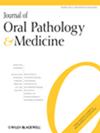Natural Antisense Transcript-Mediated Regulation of HOXA10-AS in Oral Squamous Cell Carcinoma
Abstract
Background
The oncogenic role of HOXA10-AS and HOXA10 in cancer has been well documented. However, the epigenetic role of HOXA10 and the natural antisense-mediated regulation of HOXA10-AS in oral squamous cell carcinoma progression is not understood.
Methods
A total of 35 oral squamous cell carcinoma specimens and 35 adjacent normal clinical specimens were collected and categorized on the basis of their lymph node status. HOXA10-AS and HOXA10 expression were analyzed using RT-qPCR. Methyl-capture sequencing was performed using lymph node-negative (n = 6) and lymph node-positive (n = 5) matched cases. The promoter activity of HOXA10 was determined using a luciferase assay. ChIP-qPCR was performed to determine histone mark localization in the distal promoter region of HOXA10. A protein–protein interaction network of genome-wide antisense targets was constructed using StringDB, and functional enrichment was performed using the R package ClusterProfiler. Transient siRNA-mediated transfection was performed to target specific exons of the HOXA10-AS gene, followed by subsequent cell proliferation, cell cycle, and cell migration assays and validation of cancer signaling pathways through western blotting.
Results
HOXA10-AS and its antisense target HOXA10 were significantly overexpressed in the lymph node-positive samples. The transcriptionally active distal promoter of HOXA10 consists of a constitutively unmethylated CpG island region (CUR). H3K4me3, H3K27ac, and H3K27me3 histone mark deposition at the adjacent methylated loci of the distal promoter suggest the nature of euchromatin-driven regulation. Genome-wide mapping revealed 11 potential targets of HOXA10-AS. Targeted specific knockdown of HOXA10-AS exons significantly reduced the expression of HOXA10 and deregulated its downstream targets, contributing to decreased cell cycle progression and epithelial-to-mesenchymal transition.
Conclusion
HOXA10-AS regulates the expression of HOXA10 through a natural antisense-mediated mechanism and is epigenetically regulated by constitutively unmethylated marks in the distally enhancing promoter of HOXA10.


 求助内容:
求助内容: 应助结果提醒方式:
应助结果提醒方式:


